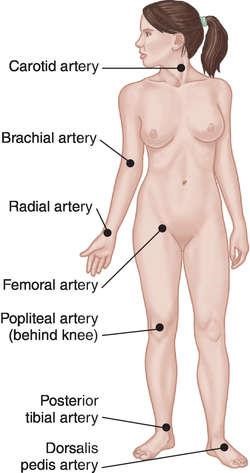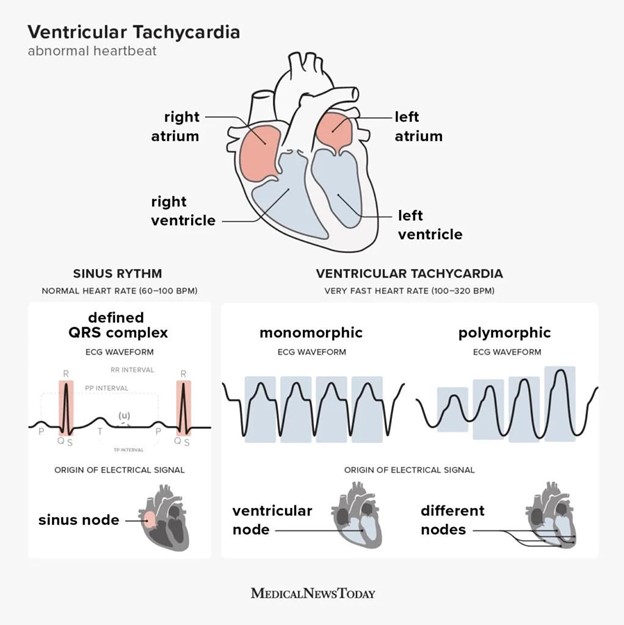Introduction > Medical Surgical
Exam Review
Cardiopulmonary Resuscitation (CPR) and Automated External Defibrillator (AED)
Total Questions : 5
Showing 5 questions, Sign in for moreA nurse is providing CPR to a client who has no pulse and is not breathing. The nurse should give two breaths after every:
Explanation
Choice A Reason: This choice is incorrect because giving two breaths after every 10 compressions would interrupt the chest compressions too frequently and reduce blood flow.
Choice B Reason: This choice is incorrect because giving two breaths after every 15 compressions would interrupt the chest compressions too frequently and reduce blood flow.
Choice C Reason: This choice is correct because giving two breaths after every 30 compressions is the recommended ratio of compressions to breaths for CPR as described in the text.
Choice D Reason: This choice is incorrect because giving two breaths after every 50 compressions would delay the ventilation too long and cause hypoxia.
A nurse is using an AED on a client who has ventricular fibrillation. The nurse should attach the AED pads to which of the following locations on the client's chest? (Select all that apply.)
Explanation
Choice A Reason: This choice is correct because it places one pad on the upper right side below the collarbone, which is close to the right ventricle of the heart.
Choice B Reason: This choice is correct because it places one pad on the lower left side below the nipple, which is close to the left ventricle of the heart.
Choice C Reason: This choice is incorrect because it places one pad on the lower right side above the navel, which is too far from the heart and may interfere with abdominal organs.
Choice D Reason: This choice is incorrect because it places one pad on the upper left side above the nipple, which is too high and may interfere with lung tissue.
Choice E Reason: This choice is incorrect because it places one pad on the lower left side above the hip, which is too far from the heart and may interfere with pelvic organs.
A nurse is providing CPR to a child who has no pulse and is not breathing. The nurse should check for a brachial pulse by feeling:
Explanation
Choice A Reason: This choice is incorrect because it describes the location of the carotid artery, which is used to check for a pulse in an adult.
Choice B Reason: This choice is correct because it describes the location of the brachial artery, which is used to check for a pulse in a child or an infant.
Choice C Reason: This choice is incorrect because it describes the location of the radial artery, which is used to check for a pulse in an adult or a conscious child.
Choice D Reason: This choice is incorrect because it describes the location of the popliteal artery, which is not used to check for a pulse in CPR.

A nurse is using an AED on a client who has ventricular tachycardia. The nurse turns on the AED and follows the voice prompts. The AED says:
Explanation
Choice A Reason: This choice is correct because it indicates that the AED has detected a shockable rhythm and is preparing to deliver a shock to the client's heart.
Choice B Reason: This choice is incorrect because it indicates that the AED has detected a non-shockable rhythm and advises the nurse to check for a pulse and start CPR if needed.
Choice C Reason: This choice is incorrect because it indicates that the AED has encountered a problem and advises the nurse to check for proper electrode placement and call for help.
Choice D Reason: This choice is incorrect because it indicates that the AED has detected a normal rhythm and advises the nurse to check for breathing and give oxygen if needed.

A nurse is providing CPR to an adult who is unconscious and not breathing. The nurse should compress the chest at a rate of:
Explanation
Choice A Reason: This choice is incorrect because compressing the chest at a rate of 60 to 80 compressions per minute is too slow and may not provide adequate blood flow.
Choice B Reason: This choice is incorrect because compressing the chest at a rate of 80 to 100 compressions per minute is too slow and may not provide adequate blood flow.
Choice C Reason: This choice is correct because compressing the chest at a rate of 100 to 120 compressions per minute is the recommended rate of chest compressions for CPR as described in the text.
Choice D Reason: This choice is incorrect because compressing the chest at a rate of 120 to 140 compressions per minute is too fast and may not allow the chest to recoil fully after each compression.
Sign Up or Login to view all the 5 Questions on this Exam
Join over 100,000+ nursing students using Nursingprepexams’s science-backend flashcards, practice tests and expert solutions to improve their grades and reach their goals.
Sign Up Now

